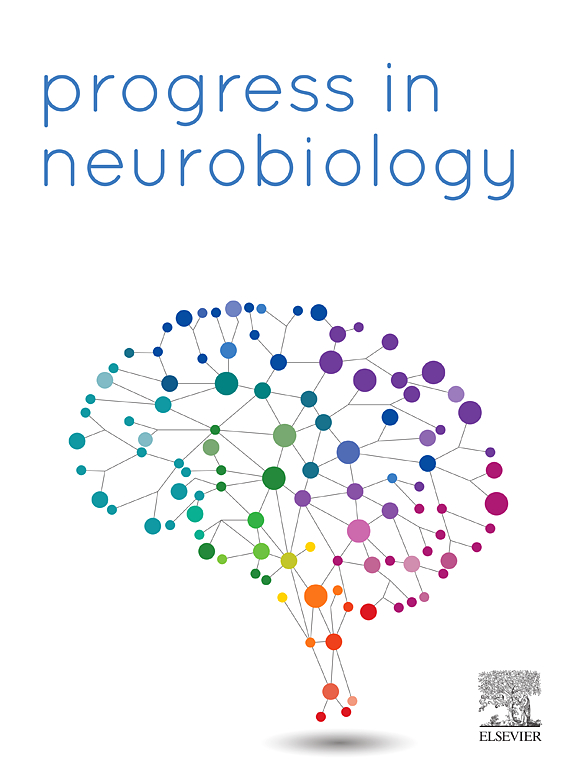Neuronal encoding of recognition memory for numerical quantities in macaque intraparietal and prefrontal cortices
IF 6.1
2区 医学
Q1 NEUROSCIENCES
引用次数: 0
Abstract
The parieto-frontal number network in primates is vital for extracting and memorizing numerical information. However, how neurons in these regions retain abstract numerical categories to recognize target numbers amidst ongoing numerical input is unclear. To explore this, single neurons were recorded from the ventral intraparietal cortex (VIP) and lateral prefrontal cortex (PFC) of two male macaques trained to memorize and recognize target numerosities while viewing sequences of irrelevant numerosities. In the VIP, neuronal selectivity for both target and irrelevant numerosities declined rapidly, making it unable to distinguish relevant from irrelevant quantities. Conversely, PFC neurons maintained selective tuning for target numerosities over time but not for irrelevant ones, enabling the distinction between sought and irrelevant quantities. Match enhancement effects, where firing increased for repeated target numerosities, were observed only in the PFC. In contrast, match suppression effects, involving reduced firing for repeated target numerosities, occurred in both the VIP and PFC. These findings suggest the VIP primarily encodes displayed numerosities, while the PFC is specialized for processing, storing, and recognizing numerical quantities by enhancing familiar numerosities. This highlights the PFC’s key role in recognition memory, contrasting with the transient coding observed in the VIP.
猕猴顶内和前额叶皮质对数字数量识别记忆的神经元编码。
灵长类动物的顶叶-额叶数字网络对数字信息的提取和记忆至关重要。然而,这些区域的神经元如何在持续的数字输入中保持抽象的数字类别以识别目标数字尚不清楚。为了探索这一点,研究人员记录了两只雄性猕猴的单个神经元,这些猕猴被训练在观看无关数字序列的同时记忆和识别目标数字。在VIP中,神经元对目标数量和无关数量的选择性都迅速下降,使其无法区分相关数量和无关数量。相反,PFC神经元随着时间的推移对目标数量保持选择性调整,但对不相关的数量却没有,从而能够区分所寻找的数量和不相关的数量。匹配增强效应,即对重复的目标数字的激发增加,仅在PFC中观察到。相反,匹配抑制效应,即对重复的目标数字的激发减少,在VIP和PFC中都存在。这些发现表明,VIP主要对显示的数字进行编码,而PFC则专门通过增强熟悉的数字来处理、存储和识别数字数量。这突出了PFC在识别记忆中的关键作用,与在VIP中观察到的瞬态编码形成对比。
本文章由计算机程序翻译,如有差异,请以英文原文为准。
求助全文
约1分钟内获得全文
求助全文
来源期刊

Progress in Neurobiology
医学-神经科学
CiteScore
12.80
自引率
1.50%
发文量
107
审稿时长
33 days
期刊介绍:
Progress in Neurobiology is an international journal that publishes groundbreaking original research, comprehensive review articles and opinion pieces written by leading researchers. The journal welcomes contributions from the broad field of neuroscience that apply neurophysiological, biochemical, pharmacological, molecular biological, anatomical, computational and behavioral analyses to problems of molecular, cellular, developmental, systems, and clinical neuroscience.
 求助内容:
求助内容: 应助结果提醒方式:
应助结果提醒方式:


